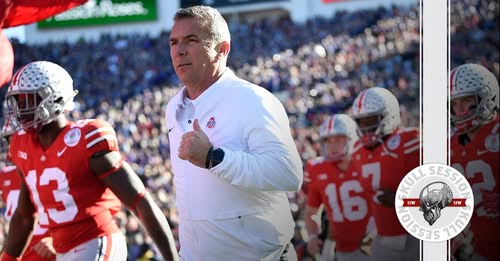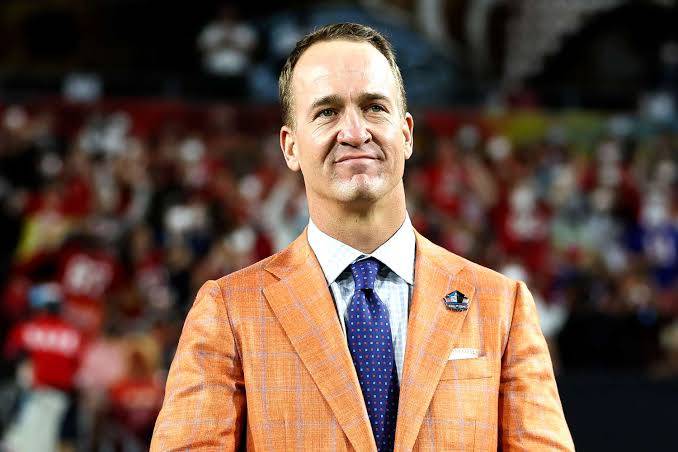Ohio State’s Tattoogate penalties still bother Urban Meyer: “I still hold a grudge about that whole thing.
Urban Meyer has accomplished nearly everything there is to achieve in college football. National championships, undefeated seasons, and a Hall of Fame-worthy coaching career have all cemented his place in the sport’s history books. But even amid the accolades and success, there’s one episode that continues to gnaw at him—a moment in college football history that he believes unfairly altered the trajectory of an entire program. That moment is known as “Tattoogate,” the scandal that rocked Ohio State football in 2010 and led to severe NCAA penalties. For Meyer, who took over the Buckeyes just a year after the fallout, the consequences of that controversy still don’t sit right. “I still hold a grudge about that whole thing,” Meyer recently said, his voice tinged with lingering frustration more than a decade later.
To understand Meyer’s lingering resentment, one must revisit the origins of Tattoogate. It was a seemingly small infraction at first—players trading memorabilia for tattoos. Jerseys, championship rings, and even autographs were exchanged for ink at a local tattoo parlor. Among the implicated players was star quarterback Terrelle Pryor, the face of the program at the time. While these transactions violated NCAA amateurism rules, they didn’t involve large sums of money, agents, or lavish gifts. But when news broke, the hammer came down with unmistakable force. The NCAA handed out suspensions, vacated wins—including a Sugar Bowl victory—and most significantly, levied a postseason ban for the 2012 season. Head coach Jim Tressel, a revered figure in Columbus, was forced to resign after it was revealed he failed to report the violations to the NCAA.
It was against this backdrop that Meyer arrived in Columbus. He had taken a brief hiatus from coaching following his tenure at Florida, citing health issues and a need for rest. But Ohio State was different. It was home. A native of Ohio and a lifelong Buckeyes fan, Meyer saw the job as a dream opportunity. Yet that dream came with chains already attached. The postseason ban meant that no matter how dominant his first team was on the field, it would have no shot at a Big Ten Championship or a bowl game. That team, the 2012 Buckeyes, went a perfect 12-0—one of only a handful of undefeated teams in school history—but their accomplishments would remain ineligible for championship glory.
To Meyer, this wasn’t just a footnote in his coaching career—it was a bitter injustice. “Those kids did everything we asked of them,” he has said on multiple occasions. “They were perfect on the field and perfect off the field. They deserved a shot at something bigger.” The pain in his voice reflects more than just the loss of trophies. It’s about the principle. Meyer believes the punishment far exceeded the crime, especially as college athletics began to shift dramatically in the years that followed.
One of the most striking aspects of Meyer’s continued frustration lies in how college football has evolved since Tattoogate. The very concept that players received tattoos in exchange for memorabilia would be laughably insignificant today. With the arrival of NIL (Name, Image, and Likeness) rights, players now earn millions through endorsements, brand partnerships, and personal businesses. What was once a punishable offense worthy of vacating wins and banning bowl appearances is now not only legal—it’s encouraged. Athletes are praised for monetizing their brand, and programs even facilitate NIL deals as part of their recruiting strategies.
This context fuels Meyer’s belief that Ohio State was punished not only harshly but also inconsistently. “You look back and realize how ridiculous it all was,” he said in a 2024 podcast appearance. “These guys weren’t taking money under the table or cheating the system. They traded items they owned, and the whole program paid the price for it. Meanwhile, some of the things going on now would’ve been considered criminal in 2010.”
What adds another layer of frustration for Meyer is that the scandal derailed what could have been one of the greatest dynasties in college football history. With the talent assembled in Columbus and Meyer’s coaching prowess, the Buckeyes could have contended for multiple titles. While they did win the inaugural College Football Playoff in 2014, Meyer often wonders what could have been if the 2012 team had gotten its shot. Several players from that squad went on to NFL careers, and the cohesion and drive they displayed during a sanctioned season were extraordinary. “I think that 2012 team could have beaten anybody in the country,” Meyer has said. “They had the heart, the leadership, and the belief. All they lacked was the opportunity.”
Meyer’s grudge isn’t just rooted in sentimentality or nostalgia. It’s about a systemic flaw he believes has existed in the NCAA for years: a lack of consistency, fairness, and foresight. He has long been a critic of how the NCAA applies its rules unevenly and retroactively. While some schools have seemed to escape severe consequences for major infractions, others—like Ohio State—have been made examples of. “It felt like they wanted to make a statement with us,” Meyer lamented. “And in doing so, they punished players and coaches who had nothing to do with what happened before.”
In recent years, even former NCAA officials have acknowledged that the Tattoogate sanctions may have been overzealous. The public perception has certainly shifted. Many now view the scandal as a relic of a bygone era when the NCAA clung to outdated notions of amateurism. There’s even been movement to restore the vacated wins and records, as schools and athletes increasingly push back against retroactive punishment. In 2021, the NCAA reinstated Reggie Bush’s Heisman Trophy after NIL changes made his original infractions seem obsolete. Similar pressure has built around Terrelle Pryor and the 2010 Buckeyes, though no official action has been taken.
For Meyer, these developments bring some solace—but not closure. “You can’t get that season back,” he says. “You can’t give those seniors a Big Ten ring or a shot at the title. You can’t give the fans those memories.” There’s a personal cost, too. Meyer has often said that his motivation has always been about maximizing potential—of teams, of individuals, of programs. To see a group fulfill its potential only to be denied its reward remains a painful memory.
Even now, years removed from coaching, the subject of Tattoogate evokes raw emotion in Meyer. He’s a man who rarely dwells on the past, known for his focus, discipline, and drive to push forward. Yet this is one chapter he can’t turn the page on. “It’s like a scar,” he said. “It fades, but it never really disappears.” His grudge isn’t about bitterness—it’s about accountability. He wants the college football world to acknowledge not just that the punishment was excessive, but that the system that allowed it was fundamentally flawed.
That grudge also serves as a cautionary tale in a sport that continues to evolve rapidly. With NIL, the transfer portal, and the looming expansion of the College Football Playoff, the landscape is almost unrecognizable compared to 2010. Meyer sees progress, but he also sees danger in forgetting the lessons of the past. “We’ve come a long way,” he says, “but we can’t pretend the past didn’t happen. We’ve got to learn from it, or else we’re just going to keep making the same mistakes with different names.”
In a broader sense, Meyer’s continued frustration with Tattoogate is emblematic of a generation of coaches, players, and fans who have seen the sport shift beneath their feet. They’ve watched institutions crumble, traditions evolve, and once-sacrosanct rules get rewritten. Through it all, Meyer remains one of college football’s most thoughtful voices—a man not afraid to challenge the establishment, even when he’s part of it. And when he speaks about Tattoogate, it’s not as a coach protecting his legacy—it’s as a man standing up for what he still believes was right.
In the end, Tattoogate may never fully leave Urban Meyer’s mind. It’s become part of his story and, by extension, part of Ohio State’s story. But far from being a wound that weakens him, it seems to have become a source of resolve. A reminder that even in a game defined by wins and losses, some battles are fought off the field—and some injustices, even after a dozen years, still demand to be remembered.



